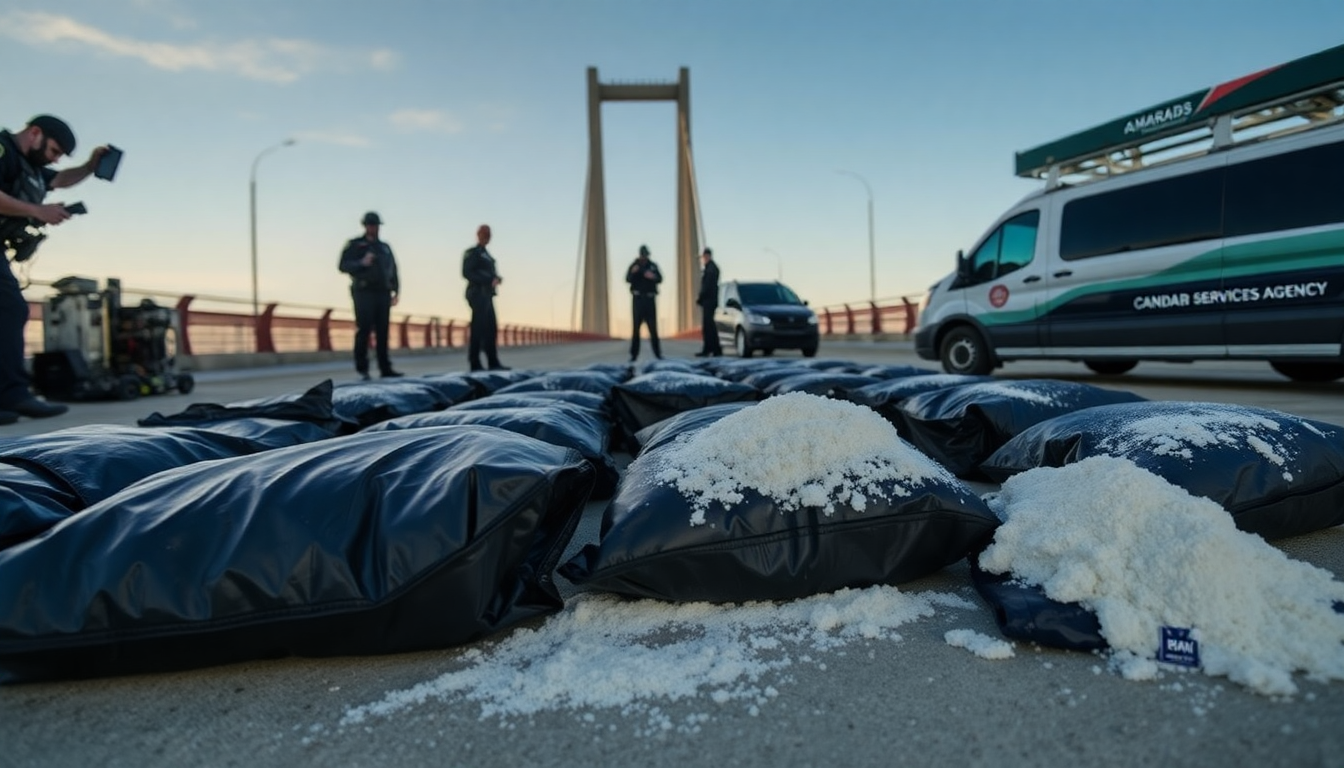Table of Contents
In a remarkable operation, the Canada Border Services Agency (CBSA) has intercepted nearly 190 kilograms of suspected cocaine at the Ambassador Bridge crossing in Windsor, Ontario. This incident, which unfolded on May 23, highlights the ongoing challenges that border security agencies confront in their fight against drug smuggling. With a staggering value of around $23.4 million, this seizure underscores the scale of illicit activities and the need for continuous vigilance from law enforcement.
Details of the Seizure and the Operation
During a routine check, border officials stopped a commercial truck entering Canada from the United States. What they found during the inspection was shocking: 187.5 kilograms of suspected cocaine cleverly concealed within two suitcases and five garbage bags. This thorough examination of the trailer led to the discovery of 161 bricks of the narcotic, showcasing just how far traffickers are willing to go to hide their contraband.
The driver, a 55-year-old man from Richmond Hill, Ontario, was arrested and handed over to the Royal Canadian Mounted Police (RCMP). Now, he faces serious charges, including importation of cocaine and possession with intent to traffic. This incident serves as a stark reminder of the ongoing battle against drug trafficking at the Canadian-U.S. border.
The Broader Context of Drug Trafficking at Border Crossings
This seizure isn’t just a one-off event; it’s part of a troubling trend of increasing drug smuggling attempts at Canadian border crossings. Just last month, border agents at the Blue Water Bridge port of entry in Point Edward, Ontario, intercepted another significant cocaine shipment. In that case, a commercial truck arriving from the U.S. was found to contain 161 bricks of suspected cocaine packed into six boxes. A 27-year-old man from Brampton was arrested in connection with this seizure.
These incidents shed light on the evolving tactics employed by drug traffickers, who continuously adapt their methods to exploit vulnerabilities in border security. In response, the CBSA is ramping up its operational strategies. Michael Prosia, a representative of the CBSA, emphasized the agency’s commitment to disrupting smuggling attempts and keeping narcotics off Canadian streets.
Future Implications and Ongoing Efforts
The challenges posed by drug smuggling aren’t going away anytime soon. As traffickers develop new concealment strategies, border officials need to stay one step ahead. This means leveraging intelligence and advanced technology to enhance detection capabilities.
Furthermore, public awareness and collaboration between law enforcement agencies are crucial in tackling this issue. Engaging communities and fostering partnerships can help identify suspicious activities and improve overall border security.
In conclusion, the recent seizures at the Ambassador Bridge and other border crossings highlight the persistent threat of drug trafficking and the need for ongoing vigilance. The CBSA’s proactive measures demonstrate a commitment to combating smuggling operations, but continuous adaptation and innovation will be essential in effectively addressing these challenges.


